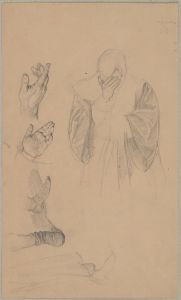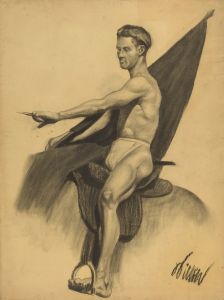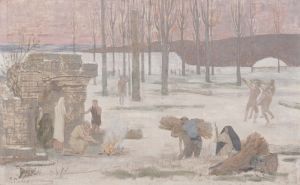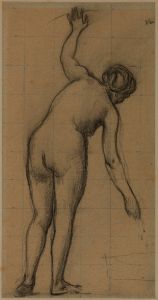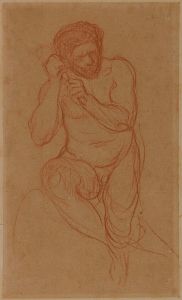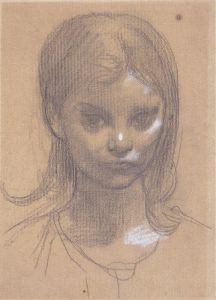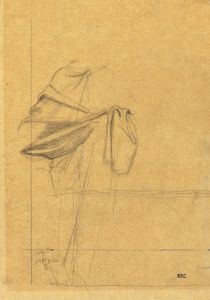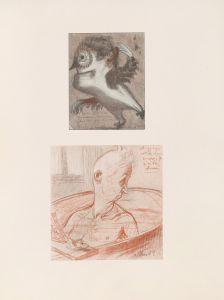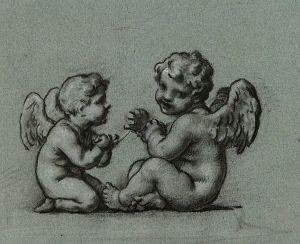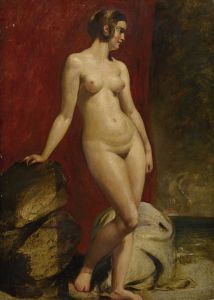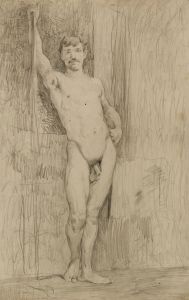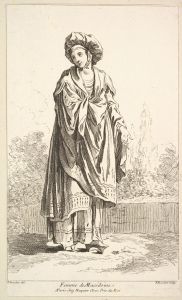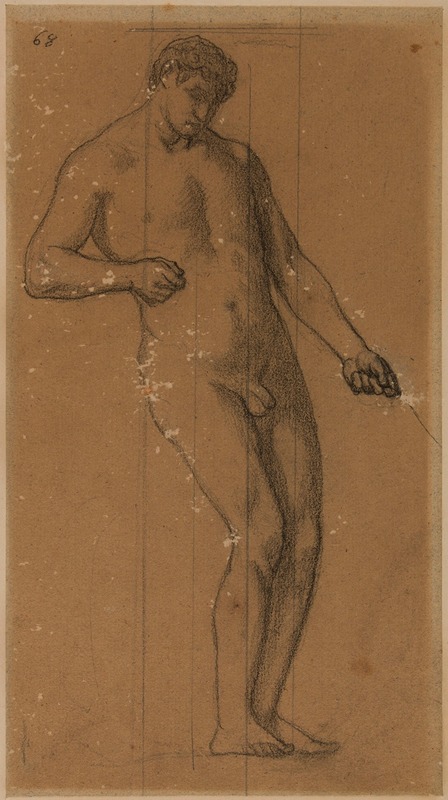
Homme nu debout, de trois quarts à droite
A hand-painted replica of Pierre Puvis de Chavannes’s masterpiece Homme nu debout, de trois quarts à droite, meticulously crafted by professional artists to capture the true essence of the original. Each piece is created with museum-quality canvas and rare mineral pigments, carefully painted by experienced artists with delicate brushstrokes and rich, layered colors to perfectly recreate the texture of the original artwork. Unlike machine-printed reproductions, this hand-painted version brings the painting to life, infused with the artist’s emotions and skill in every stroke. Whether for personal collection or home decoration, it instantly elevates the artistic atmosphere of any space.
Pierre Puvis de Chavannes was a notable French painter of the 19th century, recognized for his significant contributions to the Symbolist movement. His work, "Homme nu debout, de trois quarts à droite," which translates to "Standing Nude Man, Three-Quarters to the Right," is one of his many studies that reflect his interest in the human form and classical themes.
Puvis de Chavannes was born on December 14, 1824, in Lyon, France. He initially pursued a career in engineering but turned to painting after recovering from a serious illness. He studied under several artists, including Eugène Delacroix, and was influenced by the works of the Italian Renaissance and the frescoes of the early Christian and medieval periods. His style is characterized by a muted color palette, simplified forms, and a focus on allegorical and symbolic subjects.
The painting "Homme nu debout, de trois quarts à droite" is a study of the male nude, a subject that Puvis de Chavannes explored throughout his career. This work exemplifies his interest in the idealized human body, a common theme in academic art of the time. The depiction of the male figure in a three-quarter view allows for a dynamic representation of the body, showcasing the artist's skill in rendering anatomy and movement.
Puvis de Chavannes often employed the nude figure to convey universal themes and emotions, stripping away the specifics of identity to focus on the essence of humanity. His approach to the nude was not intended to be provocative but rather to evoke a sense of timelessness and purity. This aligns with the Symbolist movement's emphasis on conveying deeper meanings and emotions through art.
Throughout his career, Puvis de Chavannes received numerous commissions for large-scale murals, which can be found in public buildings across France, including the Panthéon in Paris and the Musée des Beaux-Arts in Lyon. His work had a significant influence on later artists, including the Nabis and the early modernists, who admired his ability to convey mood and atmosphere through simplified forms and compositions.
While "Homme nu debout, de trois quarts à droite" may not be as widely recognized as some of his larger works, it is an important example of his study of the human form and his contribution to the development of modern art. Puvis de Chavannes' legacy is evident in the way he bridged the gap between traditional academic painting and the emerging modernist movements of the late 19th and early 20th centuries.
Pierre Puvis de Chavannes passed away on October 24, 1898, in Paris, leaving behind a body of work that continues to be studied and admired for its unique blend of classical and modern elements. His exploration of the human form, as seen in "Homme nu debout, de trois quarts à droite," remains a testament to his skill and vision as an artist.





